Silver Maple trees seem to succumb to white canker by losing leaves on their branches
from the branch base toward the branch tip. Then even the leaves at the branch tip die.
But this seems to be a slow process, taking many years.
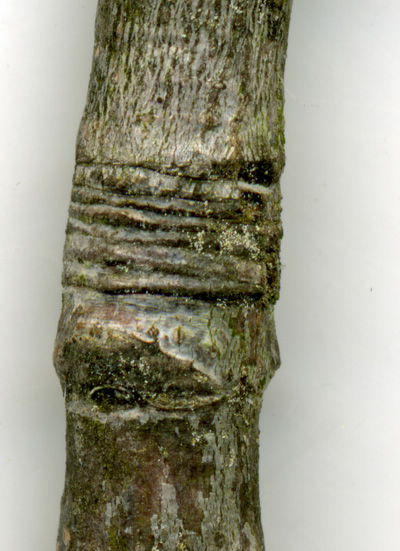
1
This part of the branch was about about 15' up a 50' tree whose top canopy was getting very sparse.
This branch still had leaves at its tips, so was alive. There are spores present, but relatively few.
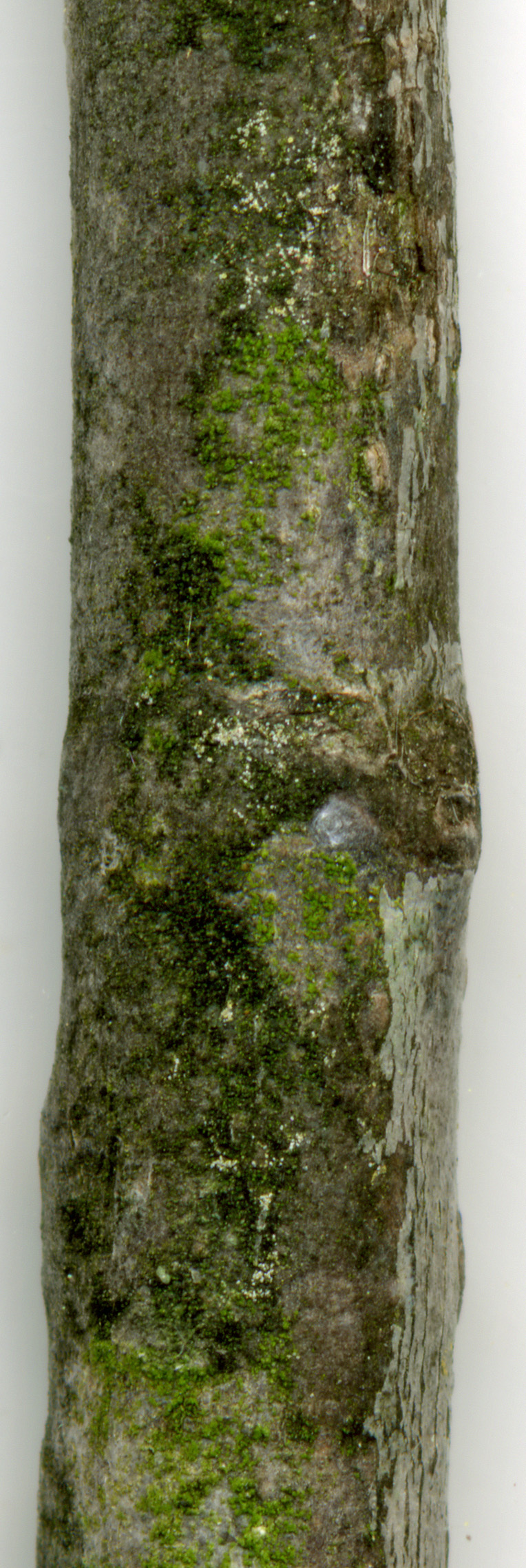
2
This branch was totally dead.
Note that the spores seem to be present only on one side of the branch,
along with some black and green substances.

3
The branch whose junction is shown here was totally dead.
It has a large quantity of spores.
Usually the spores form in quantities at branch junctions.
This branch junction was far more decayed than the nearby bark.
It seems as if the branches of silver maples do not produce spores in abundance until they are virtually dead.
While the earlier pictures were taken in late May, the following set of pictures
were taken in late September.
At this time the white canker had already reproduced by shedding it's spores.
Hence, spores were hard to find.
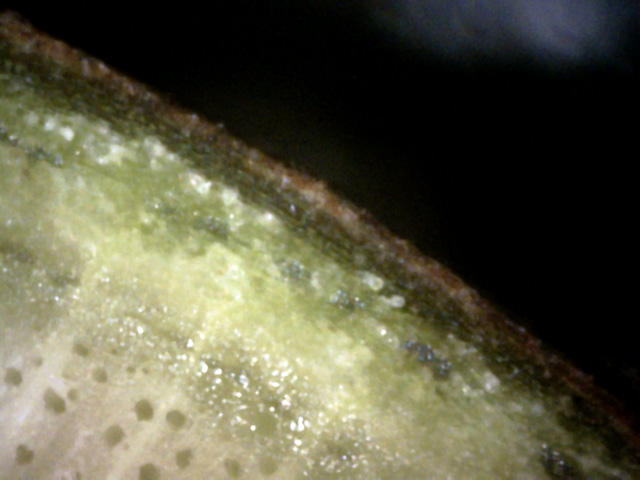
4
This twig cross-section view shows an area that has only a sprinkling of white canker particles,
all located between the cortex and the phloem.
The bark and dark green cortex are uniform in thickness and neither contains voids.
I'd call this a "moderate" white canker infection.
It's interesting to note that the white canker particles are located within
an area of maximum nutrients (sugars), which are coming from the leaves. (400x)
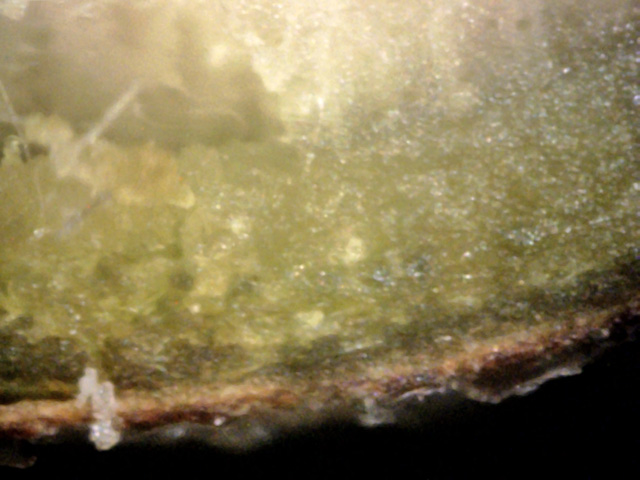
5
Contrast the relatively "clean" right side of this view against the left side,
which contains many blobs of canker material, including a blob penetrating the bark.(400x)
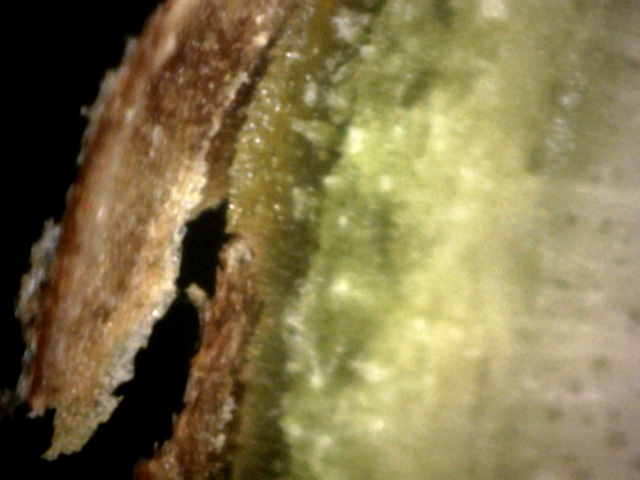
6
White canker is consuming that piece of bark on the left,
causing it to lose it adhesion to the twig.(400x)
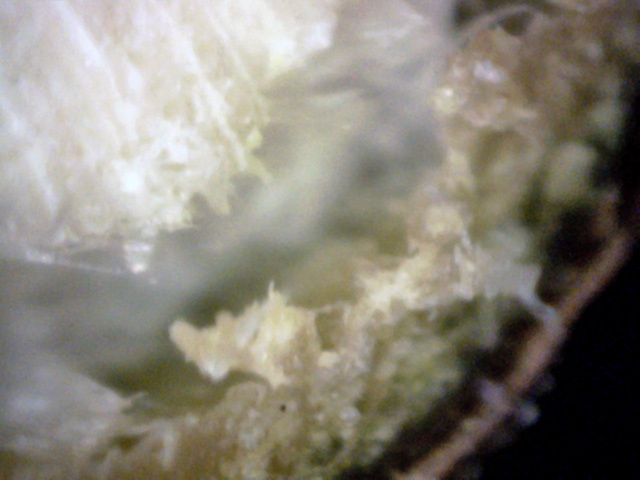
7
The white canker damage has been so severe here that the entire band of phloem
has been eaten away, leaving an air pocket along with tangles of canker mixed
with a little of the remaining green cortex.
Even the bark has separated from the cortex.(400x)
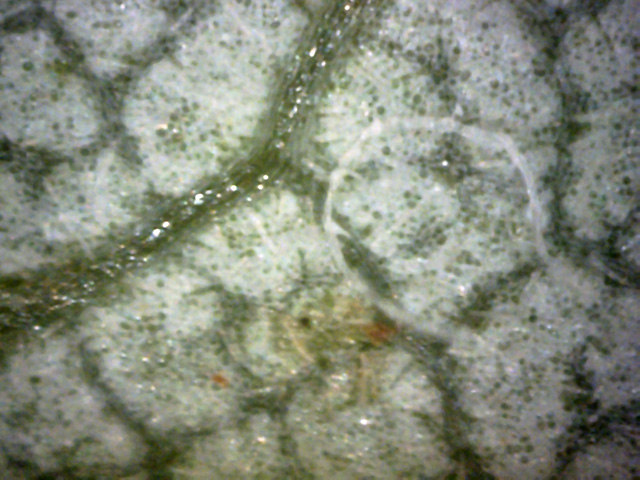
8
This is what the bottom of a silver maple leaf on this tree looks like.
All that white background appears to be white canker on the surface.
One long hypha is present (red arrow).
Many small hyphae "spiders" are also present, but are difficult to see.(400x)
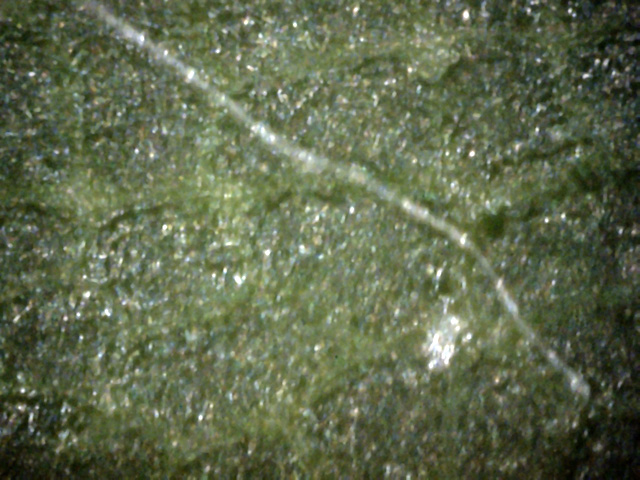 ↓
↓
9
And this is what the top of a silver maple leaf on this tree looks like.
While the top of the leaf was generally blemish-free, the particular area shown in this picture
shows an exception - a long hypha growing just under the surface.(400x)
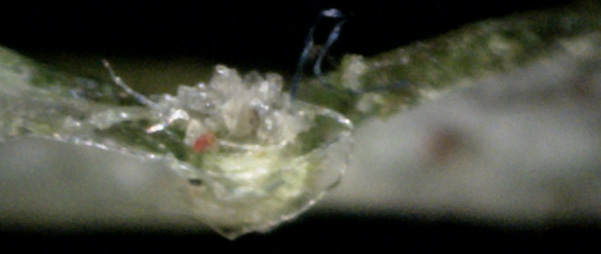 ↑
↑
10
This collection of objects appears to be a leaf stem (red arrow) with numerous
white canker particles and hyphae directly above it. The canker is probably
seeking out the sugars being gathered by the leaf. (400x)

11
This section of leaf is in relatively good shape.
The bulging area on the left is a leaf vein.
A small piece of canker protrudes above the leaf, and the bottom layer of cells appears
to be totally immersed in white canker. (400x)
 ↓
↓
12
This cut went right through a leaf brown spot about 1/8 inch in diameter.
The dark brown spot contained a lighter brown central spot.
While "tar spot" disease is common on these silver maple leaves,
this was not the typical dark black tar spot.
Notice the numerous white canker particles within and on top of the dead spot.
Also, note the big blob of canker material directly next to the deep crevice in the middle of this dead spot
(red arrow).
The circumstantial evidence is strong that this brown spot was caused by an
especially strong white canker infection here. (400x)
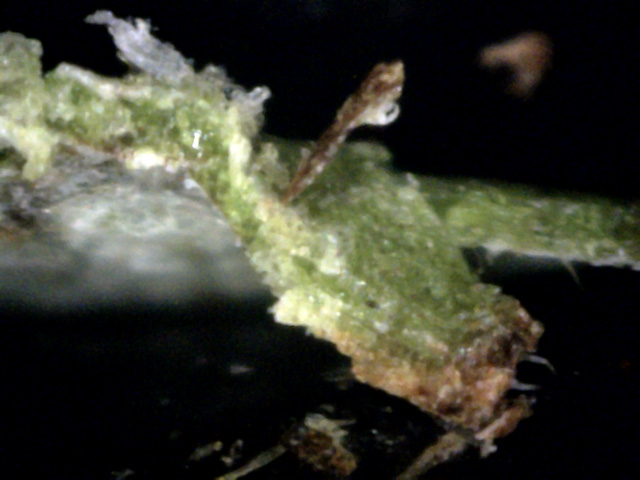
13
This one of my favorite shots: since this leaf was first bent up, and then a piece was bent down,
you can see the leaf's bottom, its inside, and its top - all in one picture.
Many of the leaf's cells can be seen since they seem to be highlighted in white canker.
It appears that the leaf is about 5 cells thick. (400x)
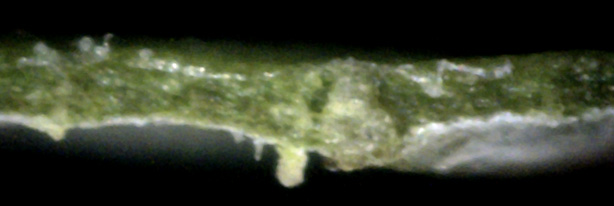
14
As seen in other leaf cross-sections, canker blobs tend to extend from the top surface
of a leaf to its bottom.
Here they not only do that, but in three spots they even grow out of the bottom of the leaf!
Also, two long hypha can be seen growing near the top of the leaf, just under its surface.
The one on the left is budding small canker blobs. (400x)